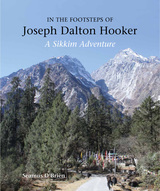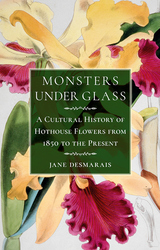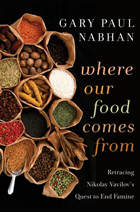3 books about Plant collecting

In the Footsteps of Joseph Dalton Hooker
Seamus O'Brien
Royal Botanic Gardens, Kew, 2018
In these times of social media saturation, many are the travelers who set off to track down an Instagrammable meal at a hole-in-the-wall featured by Anthony Bourdain or David Chang. Seamus O’Brien, however, journeyed to an unfamiliar locale with an analog guide from another era: the notes made by Joseph Dalton Hooker as he chronicled his journeys in the Sikkim Himilaya in the northeastern most corner of India. Eager to see the plants described in Hooker’s account, O’Brien set off nearly one hundred and fifty years later to trace Hooker’s footsteps through the natural wonders of the Himalayas, recounting the adventure in this new book. With Hooker as his guide, O’Brien compares mid-nineteenth-century notes to twenty-first-century reality—and he discovers that remarkably little has changed. Accompanied by Hooker’s maps and illustrations, the book is a testament to the region’s splendor and to Hooker’s skill as a botanist and cartographer.
[more]

Monsters under Glass
A Cultural History of Hothouse Flowers from 1850 to the Present
Jane Desmarais
Reaktion Books, 2018
Monsters under Glass explores our enduring fascination with hothouses and exotic blooms, from their rise in ancient times, through the Victorian vogue for plant collecting, to the vegetable monsters of twentieth-century science fiction and the movies, comics, and video games of the present day. Our interest in hothouses can be traced back to the Roman emperor Tiberius, but it was only in the early nineteenth century that a boom in exotic plant collecting and new glasshouse technologies stimulated the imagination of novelists, poets, and artists, and the hothouse entered the creative language in a highly charged way. Decadent writers in England and Europe—including Charles Baudelaire and Oscar Wilde—transformed the hothouse from a functional object to a powerful metaphor of metropolitan life, sexuality, and being replete with a dark underside of decay and death; and of consciousness itself, nurtured and dissected under glass.
In a study as wide-ranging, vivid, and beautiful as our beloved exotic blooms themselves, Jane Desmarais charts the history and influence of these humid, tropical worlds and their creations, providing a steamy window onto our recent past.
In a study as wide-ranging, vivid, and beautiful as our beloved exotic blooms themselves, Jane Desmarais charts the history and influence of these humid, tropical worlds and their creations, providing a steamy window onto our recent past.
[more]

Where Our Food Comes From
Retracing Nikolay Vavilov's Quest to End Famine
Gary Paul Nabhan
Island Press, 2011
The future of our food depends on tiny seeds in orchards and fields the world over. In 1943, one of the first to recognize this fact, the great botanist Nikolay Vavilov, lay dying of starvation in a Soviet prison. But in the years before Stalin jailed him as a scapegoat for the country’s famines, Vavilov had traveled over five continents, collecting hundreds of thousands of seeds in an effort to outline the ancient centers of agricultural diversity and guard against widespread hunger. Now, another remarkable scientist—and vivid storyteller—has retraced his footsteps.
In Where Our Food Comes From, Gary Paul Nabhan weaves together Vavilov’s extraordinary story with his own expeditions to Earth’s richest agricultural landscapes and the cultures that tend them. Retracing Vavilov’s path from Mexico and the Colombian Amazon to the glaciers of the Pamirs in Tajikistan, he draws a vibrant portrait of changes that have occurred since Vavilov’s time and why they matter.
In his travels, Nabhan shows how climate change, free trade policies, genetic engineering, and loss of traditional knowledge are threatening our food supply. Through discussions with local farmers, visits to local outdoor markets, and comparison of his own observations in eleven countries to those recorded in Vavilov’s journals and photos, Nabhan reveals just how much diversity has
already been lost. But he also shows what resilient farmers and scientists in many regions are doing to save the remaining living riches of our world.
already been lost. But he also shows what resilient farmers and scientists in many regions are doing to save the remaining living riches of our world.
It is a cruel irony that Vavilov, a man who spent his life working to foster nutrition, ultimately died from lack of it. In telling his story, Where Our Food Comes From brings to life the intricate relationships among culture, politics, the land, and the future of the world’s food.
[more]
READERS
Browse our collection.
PUBLISHERS
See BiblioVault's publisher services.
STUDENT SERVICES
Files for college accessibility offices.
UChicago Accessibility Resources
home | accessibility | search | about | contact us
BiblioVault ® 2001 - 2024
The University of Chicago Press









